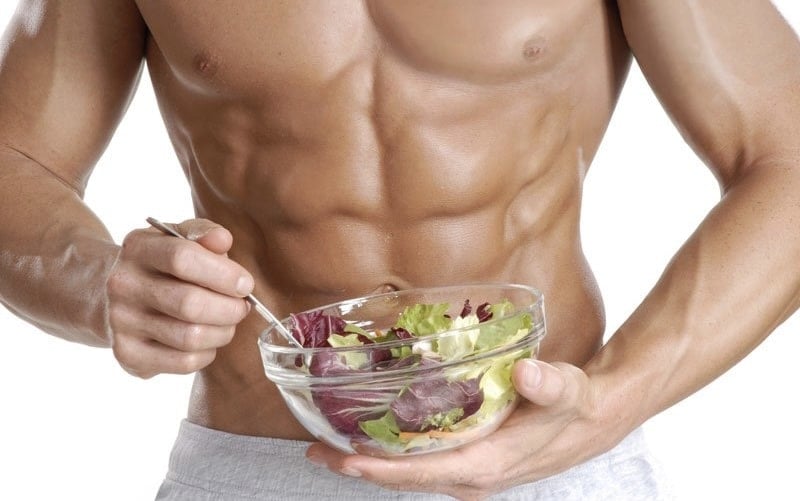Losing 30 pounds in 30 days is not for the faint of heart.
Are you looking to jumpstart your 2024 fitness endeavors? Rapid weight loss may be the solution. However, losing 30 pounds in 30 days is no easy feat. Experts recommend a gradual and healthy weight loss approach, aiming to shed around 4-8 pounds per month. One would need to lose a pound a day to achieve this target.
It’s indeed feasible to shed 30 pounds in just 30 days; however, there are potential pitfalls to be aware of. In this post, we’ll provide valuable tips for your journey to lose 30 pounds in 30 days, accompanied by a wealth of essential information on effective weight loss strategies.
Should You Try This Challenge?
Losing 30 pounds in 30 days requires a lot of effort. You’ll need to focus on a strict diet and exercise regime for 30 days without any cheat meals. There’ll possibly be no eating out, no soda, no sweets, and zero junk food.
If you’re used to eating these foods consistently, this could significantly affect your physical and mental health and require a massive lifestyle shift. You’ll notice a substantial increase in hunger and fatigue. In addition, monitoring your calories and becoming obsessed with what goes in your mouth will become the norm.
If you have any underlying medical conditions, trying this challenge is out of the question and strongly not recommended. If you’re pregnant or have an eating disorder, it’s also suggested not to lose this much weight in such a short amount of time.
Reasons to Lose 30 Pounds in 30 Days
Some people may be in good enough health or better positioned to try this challenge. Do you have a wedding coming up, or are you going to your high school reunion and need to lose those pounds?
Losing 30 pounds in 30 days could also be satisfying and help you jump-start your 2024 fitness endeavors. The motivation you build and the commitment and determination required to complete the challenge can help you quickly transition to a more sustainable long-term plan.
How to Lose 30 Pounds in 30 Days
Losing weight requires a multitude of tasks. Firstly, and most importantly, the number of calories you consume plays a huge role. That’s why many weight loss plans focus on reducing how much you eat and increasing your activity levels to burn more calories.
Knowing how many calories your body uses to keep you at your current weight level is essential. This is known as your maintenance calories. There are many online calculators that you can use to find yours.
Eat Drastically Fewer Calories
After finding out how many calories you need to stay at your current weight, you need to work on reducing that. Storing body fat occurs when you have unused calories that your body stores for the future. The higher your calorie surplus, the more fat stores you’ll have, which leads to weight gain.
To reduce that fat, you need to go into a calorie deficit. This is a situation where your body has less than the required number of calories it needs daily. This forces it to convert your fat stores and use them, leading to weight loss.
One of the ways to hit that calorie deficit is to eat fewer calories. To achieve a pound a day of weight loss, you’ll need to be in a 3500 caloric deficit daily (there’s one pound in 3500 calories). This will mean a significant cut in how much and what you eat. Using a calorie calculator for each meal and preparing your meals beforehand can be very helpful.
Exercise Daily
To burn 3500 calories more than you’re consuming each day will require the helping hand of physical activity. For the 30 pounds in 30 days challenge, you’ll need to exercise at least one hour daily. To do this, you must have a robust routine that doesn’t get boring. It’s also essential to avoid doing the same daily routines as this could lead to overuse of specific muscles and injuries.
The first routine you’ll want to implement is cardio, which is excellent for burning additional calories. Cardio workouts are usually fast-paced and could include running, rowing, and cycling. You can switch between HIIT (High-Intensity Interval Training) and LISS (Low-Intensity Steady State Training) to keep your cardio options varied.
Moreover, you’ll want to mix cardiovascular activity with strength training. These mainly involve some form of resistance, like barbells, dumbbells, kettlebells, or resistance bands. However, you can also try many bodyweight exercises for strength training.
Strength training will burn calories and help you build muscle, which speeds up your metabolism, allowing you to burn more calories daily without adding any extra activity. Combine strength training with cardio for best results.
Do Lots of Walking
Walking, a form of LISS, is another way to create a calorie deficit by burning energy. While you might lose less than you would with high-intensity workouts, it’s effective because you can do lots of it. That’s because it’s a form of active recovery and will allow you to recover from workouts without risking overtraining or impacting performance.
To lose 30 pounds in 30 days, you can commit to walking 3-4 miles daily on top of your other physical activity. According to this 2019 study, it takes the average person around 15-22 minutes to walk one mile (1). So, in one hour of walking, you should be able to cover around 3 miles.
Diet & Drink Lots of Water
Dieting is one of the ways to control how much and the kind of calories that you consume. Some great examples include the keto diet, the Mediterranean diet, and the Atkins diet. According to this research, low-fat, low-carb, and high-protein diets can help lose weight (2).
Besides the foods you consume, water can be very filling and has zero calories. Drinking more water can help you eat less, which could lead to you losing weight (3). Aim to drink about 64 ounces of water each day.
Eat Lots of Protein
Did you know that eating meals high in protein can boost your metabolism and increase the number of calories that you burn? In this study, the group that ate more protein lost around 260 calories more than those that didn’t (4). That is around the equivalent of what some people lose doing an hour of moderate-intensity exercises!
Proteins are also more filling and help to reduce your appetite. To lose the high number of pounds for this challenge, replacing your carbs with proteins could go a long way. Just remember that you still need some carbs for energy throughout the day. You could also boost your protein intake by taking protein powders and other muscle-building supplements like creatine or amino acids like BCAAs.
Sleep Adequately
Sleeping helps with weight loss in multiple ways. First, you don’t eat while sleeping but still burn calories. While it depends on age, weight, and sleep quality, you could burn as many as 845 calories while sleeping.
Lack of sleep also reduces your energy and motivation in general. You’ll need adequate sleep to succeed at this challenge as you’ll be tired from exercising and drastically decreasing energy consumed. So try to get around 7-9 hours of sleep each day.
Wrapping Up
Achieving a weight loss of 30 pounds in 30 days won’t come easy, so make sure you’re fully committed before embarking on this journey. It’ll require increasing your activity level, consuming fewer calories, and enduring moments of hunger and fatigue. However, if you can stay determined and resilient, you’ll undoubtedly reach your goal. Are you up for the challenge?
Follow us on Instagram, Facebook, and Twitter for fitness advice!
References
- Rasmussen, L. J. H., Caspi, A., Ambler, A., Broadbent, J. M., Cohen, H. J., d’Arbeloff, T., Elliott, M., Hancox, R. J., Harrington, H., Hogan, S., Houts, R., Ireland, D., Knodt, A. R., Meredith-Jones, K., Morey, M. C., Morrison, L., Poulton, R., Ramrakha, S., Richmond-Rakerd, L., Sison, M. L., … Moffitt, T. E. (2019). Association of Neurocognitive and Physical Function With Gait Speed in Midlife. JAMA network open, 2(10), e1913123. https://doi.org/10.1001/jamanetworkopen.2019.13123
- Kim J. Y. (2021). Optimal Diet Strategies for Weight Loss and Weight Loss Maintenance. Journal of obesity & metabolic syndrome, 30(1), 20–31. https://doi.org/10.7570/jomes20065
- Bracamontes-Castelo, G., Bacardí-Gascón, M., & Jiménez Cruz, A. (2019). Effect of water consumption on weight loss: a systematic review. Efecto del consumo de agua sobre la pérdida de peso: revisión sistemática. Nutricion hospitalaria, 36(6), 1424–1429. https://doi.org/10.20960/nh.02746
- Bray, G. A., Redman, L. M., de Jonge, L., Covington, J., Rood, J., Brock, C., Mancuso, S., Martin, C. K., & Smith, S. R. (2015). Effect of protein overfeeding on energy expenditure measured in a metabolic chamber. The American journal of clinical nutrition, 101(3), 496–505. https://doi.org/10.3945/ajcn.114.091769










